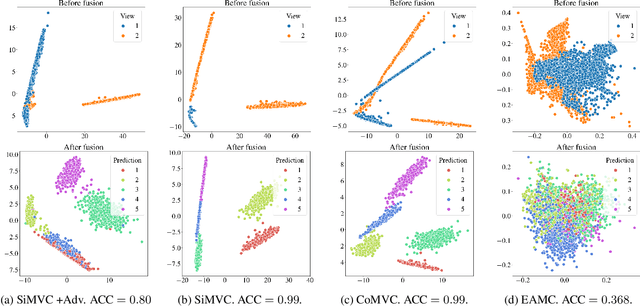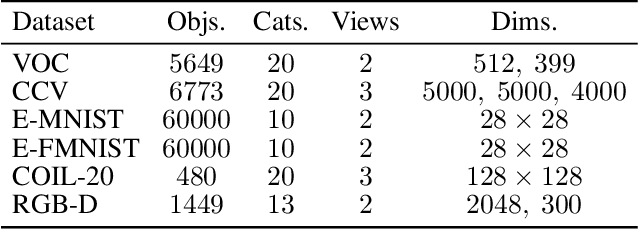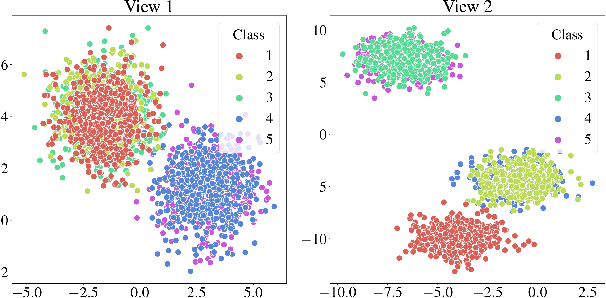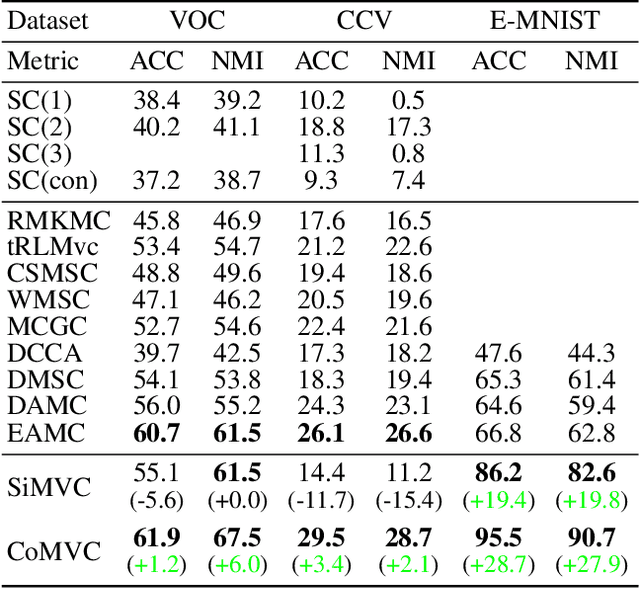Reconsidering Representation Alignment for Multi-view Clustering
Paper and Code
Mar 13, 2021



Aligning distributions of view representations is a core component of today's state of the art models for deep multi-view clustering. However, we identify several drawbacks with na\"ively aligning representation distributions. We demonstrate that these drawbacks both lead to less separable clusters in the representation space, and inhibit the model's ability to prioritize views. Based on these observations, we develop a simple baseline model for deep multi-view clustering. Our baseline model avoids representation alignment altogether, while performing similar to, or better than, the current state of the art. We also expand our baseline model by adding a contrastive learning component. This introduces a selective alignment procedure that preserves the model's ability to prioritize views. Our experiments show that the contrastive learning component enhances the baseline model, improving on the current state of the art by a large margin on several datasets.
 Add to Chrome
Add to Chrome Add to Firefox
Add to Firefox Add to Edge
Add to Edge